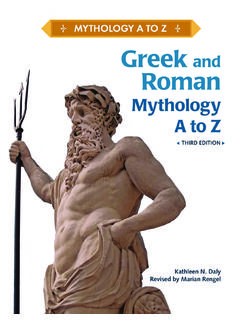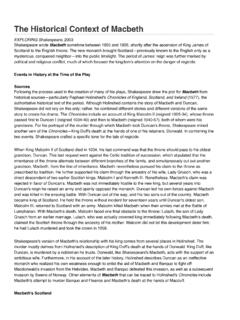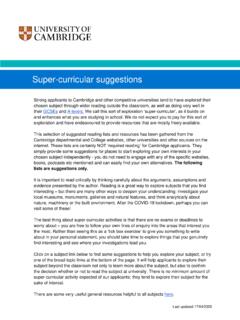Transcription of Norse Mythology: Legends of Gods and Heroes
1 Norse mythology Legends of gods and Heroes by Peter Andreas Munch In the revision of Magnus Olsen Translated from Norwegian by Sigurd Bernhard Hustvedt New York The American-Scandinavian Foundation 1926 vii CONTENTS PAGEST ranslator s Preface xiIntroduction xiii I. MYTHS OF THE gods The Creation of the World The Giants The sir Men and Women Dwarfs Vanir Elves .. 1 The Plains of Ida Valhalla Yggdrasil .. 5 Odin .. 7 Thor .. 10 Balder .. 12 Njord .. 13 Frey .. 15 Tyr .. 16 Heimdal .. 17 Bragi .. 18 Forseti .. 18 Hod Vali Vidar Ull .. 18H nir Lodur .. 19 Loki and His Children .. 21 Hermod Skirnir .. 25 The Goddesses Frigg Jord Freyja .. 25 Saga Eir Gefjon Var Vor Syn Snotra .. 28 Idun Nanna Sif .. 29 The Norns .. 30 Familiar Spirits Attendant Spirits.
2 31 The Valkyries .. 32 Thorgerd H lgabrud and Irpa .. 34 The Forces of Nature gir .. 34 Night Day .. 37 viii Hel .. 37 The Giants .. 39 The Dwarfs .. 41 The Vettir .. 42 The Heroes and Life in Valhalla .. 48 Corruption .. 49 The Treasures of the gods .. 50 The Rape of Idun .. 53 Thor s Unlucky Journey to Jotunheim .. 56 Thor s Visit to Hymir .. 65 Thor s Visit to Geirr d .. 70 Thor s Combat with Rungnir .. 72 Thrym Steals Mjollnir .. 76 The Necklace of the Brisings .. 79 The Death of Balder .. 80 gir s Banquet The Chastising of Loki .. 86 Other Norse Myths Concerning the Death of Balder (in Saxo) 94 The Death of Kvasir Suttung .. 97 Odin s Debate with Vafthrudnir .. 100 Odin (Grimnir) and Geirr d .. 102 Harbard and Thor .. 105 Ragnarok The Twilight of the gods .. 108On the mythology of the Eddas.
3 112 II. HEROIC Legends Introductory Remarks .. 123 Wayland .. 126 The Hjadnings .. 129 The legend of Tyrfing .. 130 The Legends of the Volsungs Helgi Hjorvardsson .. 147 ix Volsung Siggeir Sigmund Sinfjotli .. 151 Helgi Hundingsbane .. 159 Sinfjotli .. 165 The Death of Sigmund .. 166 Sigurd Fafnirsbane .. 168 The Niflungs The Slaying of Sigurd .. 175 Atli .. 184 Jormunrek .. 187 Aslaug .. 190 German Legends Dealing with Siegfried and the Nibelungs .. 192 The Development of the Legendary Cycle of the Volsungs .. 197 Hadding .. 204 Frodi the Peaceful and His Mill .. 211 Helgi and Rolf Kraki .. 215 Starkad the Old .. 221 Orvar-Odd .. 235 Norna-Gest .. 237 Asmund Kempibane .. 239 Romund Greipsson .. 242 Ragnar Lodbrok and His Sons .. 245 Hjorleif and Half .. 251 Fridthjof .. 256 III. THE WORSHIP OF THE gods Of Temples, of Sacrifices, and of Divination.
4 267 The Principal Temples in the North .. 276 Bibliography .. 279 Notes .. 283 Index .. 363 xi TRANSLATOR S PREFACE The Norwegian original on which the present translation is based was written by Peter Andreas Munch, the founder of the Norwegian school of history. Munch s scholarly interests embraced also many related subjects, such as general history, archaeology, geography, ethnography, linguistics, and jurisprudence. His varied labors have in large part stood the test of time. His most important work, the History of the Norwegian People (Det norske folks historie, 8 vols. 1851 63) covering the period of Norway s ancient independence ending with the Kalmar Union of 1397, still remains a source book and a point of departure for historians. The great significance of Munch s scholarship lies in its influence upon the modern renascence of Norwegian culture .
5 In the middle of the nineteenth century he was the most conspicuous intellectual force in the country, as Wergeland had been before him and as Bj rnson came to be after him. The national spirit in Norway, which has steadily gained strength, owes a heavy debt to the gifted leaders of an earlier generation, not least among whom was Munch. As an historian, as an editor of Old Norse poetry and saga, as a recorder of the venerable myths and Legends of the race, he did yeoman service in establishing a sense of historical continuity between the Norway of the past and the Norway of the present. Since his day, Norwegians have labored in the fields of history, folklore, and related subjects, deepening and strengthening that fruitful sense of national consciousness which he did so much to awaken.
6 Xii Munch s handbook of Norse mythology , which first appeared in 1840, was originally written as a supplementary volume to a school text on the history of Norway, Sweden, and Denmark. As a book for students and as a work of general reference it has maintained its popularity. The third edition (1922) from which the translation is made, was prepared by Professor Magnus Olsen of the University of Oslo, in response to the demand for an up-to-date treatment of the entire subject. He found it advisable, however, to revise Munch s work rather than to attempt a wholly original book, since he was thus able to incorporate the results of later research in a volume which had long enjoyed both popular and scholarly approval. The value of Munch s work has been greatly increased through Professor Olsen s revision.
7 The English translation is intended as a companion volume to two other books published in the SCANDINAVIAN CLASSICS series, The Prose Edda, translated by Arthur Gilchrist Brodeur, and The Poetic Edda, translated by Henry Adams Bellows. Norse mythology will serve alike the student of Old Norse literature, and the general reader who seeks an authoritative guide through the world of Northern myth and legend . My thanks are due to Professor Magnus Olsen for permission to translate the work, and to Professor William Witherle Lawrence, of Columbia University, Chairman of the Publications Committee of the American-Scandinavian Foundation, for many valuable suggestions. S.
8 B. H. xiii INTRODUCTION The mythology of our forefathers, as we know it from Norse mythical poems and from the records of ancient writers, has not come down to us in its genuine pagan form. It is extant only in a later form, dating from a period when its devotees had begun to lose their absolute faith in the older divinities, had begun to harbor doubts and to catch intimations of a consolation nobler and better than that which the ancient divinities had been able to give them. We learn to know it, furthermore, in the sources designated, as it manifested itself in Norway during the centuries just preceding the introduction of Christianity and as it appeared, something more than a hundred years earlier, upon its transference into Iceland by the Norwegian emigrants.
9 In its main outlines it was at that time common to all the so-called Germanic tribes: on the one hand, to Norwegians, Swedes, and Danes; and on the other hand, to Goths, Franks, Saxons, Swabians, Frisians, Anglo-Saxons, and other peoples. Yet in the nature of the case, as the Germanic tribes gradually diverged with respect to language, customs, and modes of living, and each thus entered upon a separate development, it followed of necessity that mythology and cult took on a distinct character in each of these tribes; even in early prehistoric times, moreover, external influences proceeding from the more cultivated of neighboring non-Germanic peoples must have been at work, and also mutually operative influences xiv as between the Germanic tribes themselves.
10 The ancient Norse religion was thus far from being identical with the mythology and worship of the other Northern or Germanic peoples. Evidence to this effect is to be discovered even in a cursory comparison with the few available accounts of religious conditions among the various German tribes during the pagan era. The pagan beliefs of the Swedes and the Danes, of which little is known through direct tradition, must also have differed in many particulars from those prevailing in Norway and Iceland as paganism drew toward its end. According to the plan of the present work, the Norwegian-Icelandic myths will have the most prominent place; it is these which particularly concern us, and only by means of these is it possible to reconstruct anything like a complete mythology .

![Translated by Arthur Gilchrist Brodeur [1916]](/cache/preview/b/7/6/1/5/b/6/4/thumb-b7615b64324a0e96bab2978ad70bd4f0.jpg)





